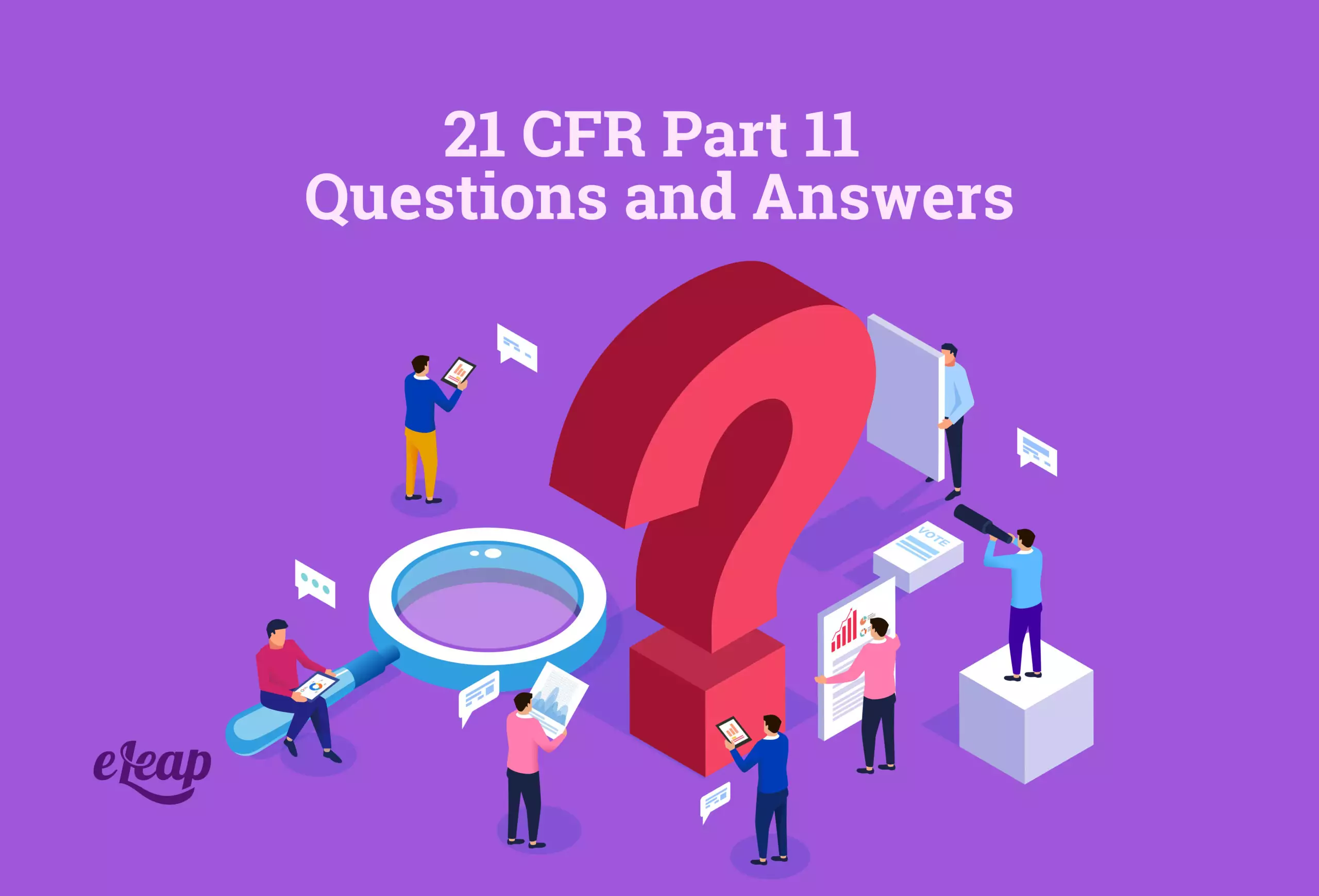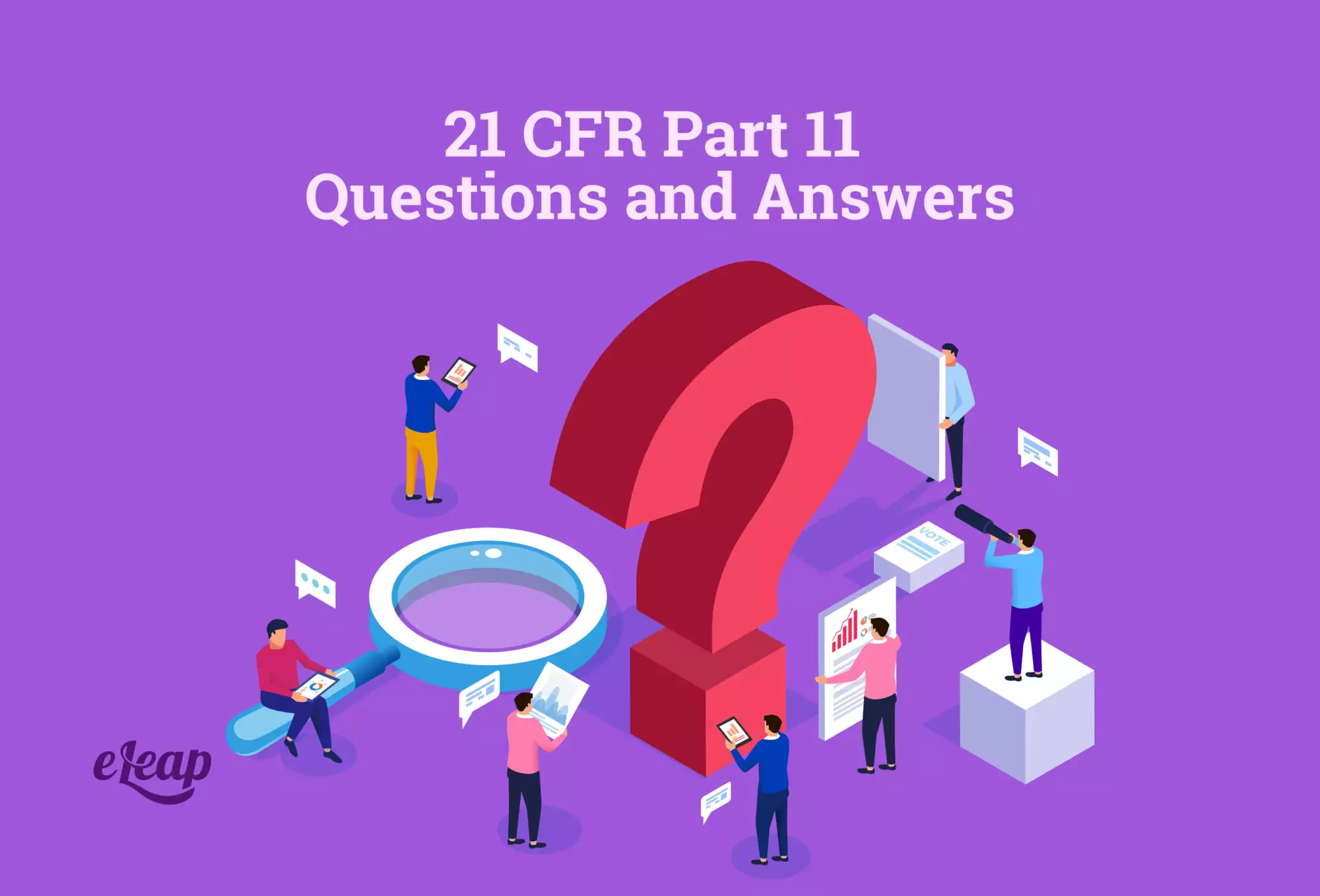21 CFR Part 11 Questions and Answers
Tips for Creating a Compliant Policy for Your Life Sciences Organization

Title 21 CFR Part 11 is an important topic in the life sciences industry. As people are looking to build compliant solutions and keep their companies on track, understanding how to achieve those goals includes learning about the regulations and guidelines in place that are being held as the industry standard. In order to help more people better understand Title 21 CFR Part 11 and how it works, we’ve compiled a simple question-and-answer format article that will allow you to learn more about all of the most important aspects, one thing at a time. You can download the whitepaper “How to Prepare for a 21 CFR Part 11 FDA Inspection“.

What is Title 21 CFR Part 11?
Title 21 CFR Part 11 is the regulatory guideline that outlines provisions for electronic records and electronic signatures, including the management, creation, and regulation of them as well as what qualifies.
This outlines how electronic records can be created, stored, and shared, as well as what requirements exist for electronic signatures and which elements qualify as validating factors, including things like two-factor authentication and requiring a reason for any change that is made in the system according to CFR Part 11. Adhering to this statute can be confusing, so pay attention to the 21 CFR Part 11 questions and answers we raise here. You can also take a 30-day free trial of the validated eLeaP system and see how compliance can be simplified and effective.
Who does CFR Part 11 apply to?
This statute applies to several different industries, including life sciences and pharmaceuticals, as well as biotech companies and others. This regulatory statute applies to any organization within these industries that is looking to create secure digital or electronic records and use electronic signatures to do business online or in a digital environment rather than using hard copies.
How does Title 21 CFR Part 11 relate to GxP?
GxP, or the Good Practice Guidelines for multiple disciplines, define the ways that life sciences companies and other regulated organizations must control procedures, processes, people, and their premises to ensure quality and consistency in products and services.
The FDA’s Title 21 CFR Part 11 is just one facet of GxP compliance in the life sciences industry. Along with the FDA, the European Medicines Agency (EMA), the International Organization for Standardization (ISO), and the Medicines and Healthcare Products Regulatory Agency in the UK (MHRA) all refer to and define GxP in various publications.
What does GxP say about electronic records?
Under GxP, Part 11 is considered a Good Documentation Process, among other things. Data integrity is a critical component of GxP, including the guideline that if it hasn’t been documented, it didn’t actually happen. That is, organizations must specify, document, and accurately record every single critical action taken by an employee while involved in the creation, manufacturing, or delivery of a project or product. This is generally done with a Quality Management System.
What is considered an “electronic signature”?
An electronic signature is a digital version of someone signing their name in a legally binding way. Of course, this wasn’t always a perfect solution. There were several platforms and documents in the past that simply allowed people to type in their name or initials in place of an actual signature, attesting to the validity of whatever they were signing. This is not a secure method of doing things, though, so the FDA has stepped in and created a demand for a better solution.
Today’s electronic signature requires a username and password, along with a reason for the action taken on electronic records while logged in. For example, if someone logs into the LMS and retakes an exam they failed last time, the reason would be to retake the exam. Even if you just add an employee’s updated training status, a change must be noted as part of your electronic signature.
The idea is that not only will this keep data secure, but it will allow everyone within the organization to trace who made changes and when, as well as to keep tabs on the various actions and activities of others.
How do I know if the software is compliant?
The biggest struggle for many organizations is determining which tools are compliant and which ones are yet to be assessed. The software does not have to list that it meets compliance standards for CFR Part 11, so you might often find yourself having to ask. Some software does have compliant and non-compliant versions, but if you’re in the life sciences community, it’s best to default to buying compliant tools as much as possible so that you can stay ahead of the data security game. Check to make sure the software you are purchasing has undergone computer system validation. We know you might have more questions and need more answers regarding 21 CFR Part 11, so be sure to check out the quick definitions page.
If the software is reputable, it will generally do its part to ensure that you know that it is compliant with this standard and also that it is a transparent solution that will provide you with the resources that you need. If software balks at giving information about certification or if they seem to avoid the topic entirely, that is probably something that you should consider suspect.
Who is responsible for CFR Part 11 compliance?
Although software brands are responsible for creating products that fall within compliance guidelines if they wish to be used by life sciences companies, it is ultimately up to you to make sure that you are being compliant with CFR Part 11 and holding your team to a higher standard when it comes to data security and protecting your electronic records.
You should do your part to learn about this regulatory standard and what it entails, as well as what elements are going to be most important to your organization specifically. That way, you can focus your efforts and then focus on training people on the specific areas they need to know so you aren’t wasting time or resources.
What should I be training my employees on with CFR Part 11?
You’ll want to focus on proper training for username and password creation, ensuring that your company policies are in line with CFR Part 11 and that your SOPs are included in your LMS as part of onboarding and ongoing training.
You will also want to train people on:
- Password hygiene
- Phishing avoidance
- Two-factor authentication
- Data integrity and security
With a proper LMS, it will be easy for you to implement training modules that cover all of these topics and more. Contact eLeap to discuss your needs and see how a validated software solution can help.